Lemon: fintech platform for SaaS and brokers
Role: Co-founder & Product engineer
Focus: Product strategy, UX, frontend engineering (Next.js, React, Tailwind)
Lemon was born from the idea of making software buying easier for small businesses. The original concept was Buy Now, Pay Later for SaaS - imagine a "Pay with Lemon" button on a SaaS checkout page, inspired by Klarna. Unlike Klarna, we wouldn’t lend off our own balance sheet. Instead, we’d partner with lenders and match buyers with the right financing at the moment of purchase.
We eventually secured partnerships with two UK lenders (Siemens Financial Services and Shawbrook Bank). But I was keen to get learning as soon as possible, so whilst those partnerships were being negotiated and finalised, we focused on what we could ship and learn from.
That approach led to three distinct product phases.
Subscription management app for SMBs
To start building an audience and learn how SMBs discovered and paid for software, we launched a free SaaS subscription manager. It let companies track their active subscriptions, licences, and payment methods. Around 20 small businesses used it regularly.

The subscription page showing a table of SaaS subscriptions.
It wasn’t our end goal, but it got us closer to the problem. We learned that most small businesses had little visibility into what they were spending on software - which became a valuable data foundation for future features.
What I did:
- Work on this app started before our CTO joined Lemon, so I designed and built the MVP solo
- I chose the tech stack, Next.js, Vercel, Supabase, and Tailwind - which we used throughout Lemon
- Built user onboarding, team invitations, subscription tracking
- Developed an AI feature allowing users to quickly track a subscription by uploading an invoice
- Launched to users and gathered feedback to shape the next phase
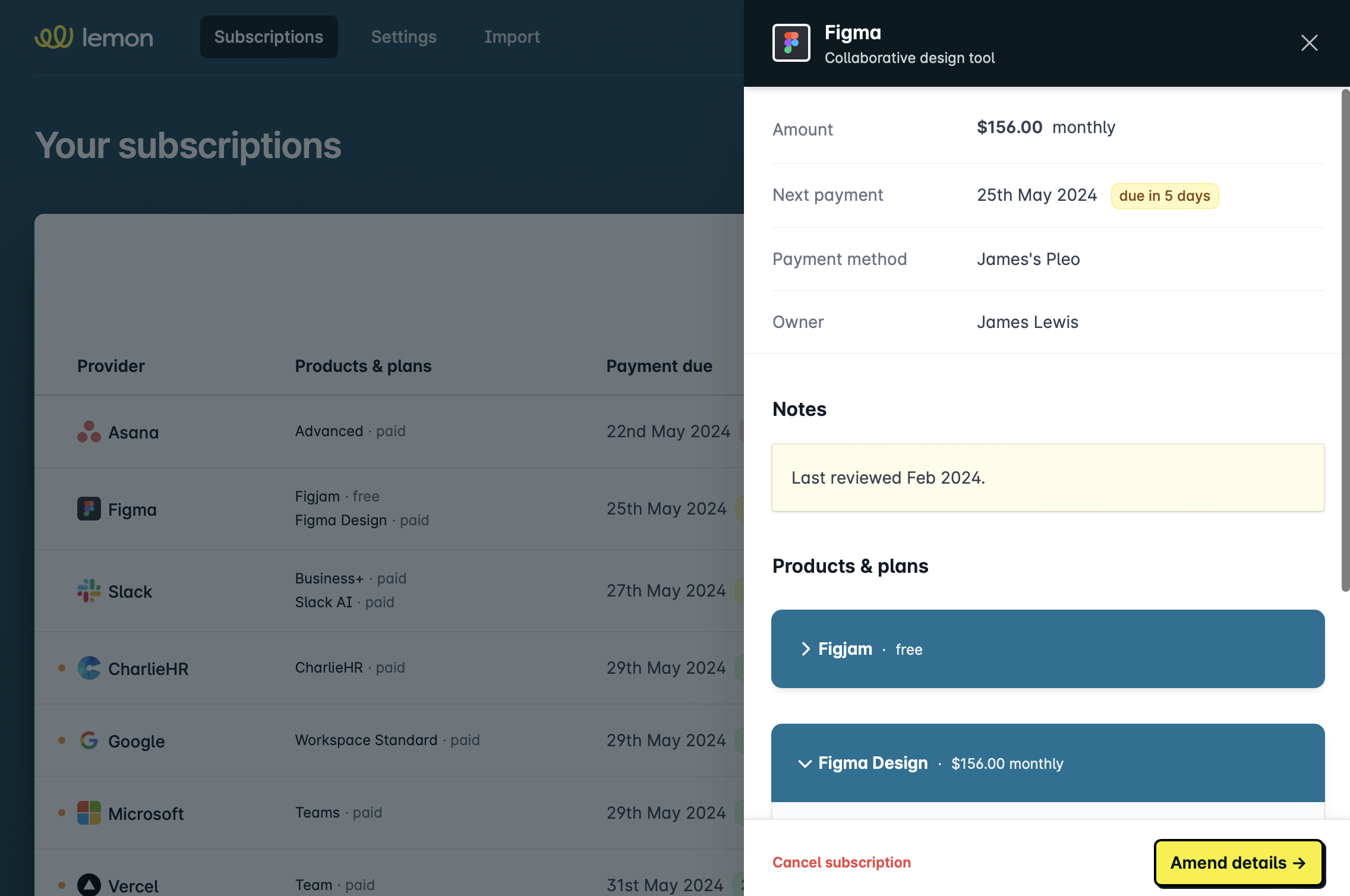
Individual subscriptions could be managed from a side panel.
Phase 2: Financing platform for SaaS vendors
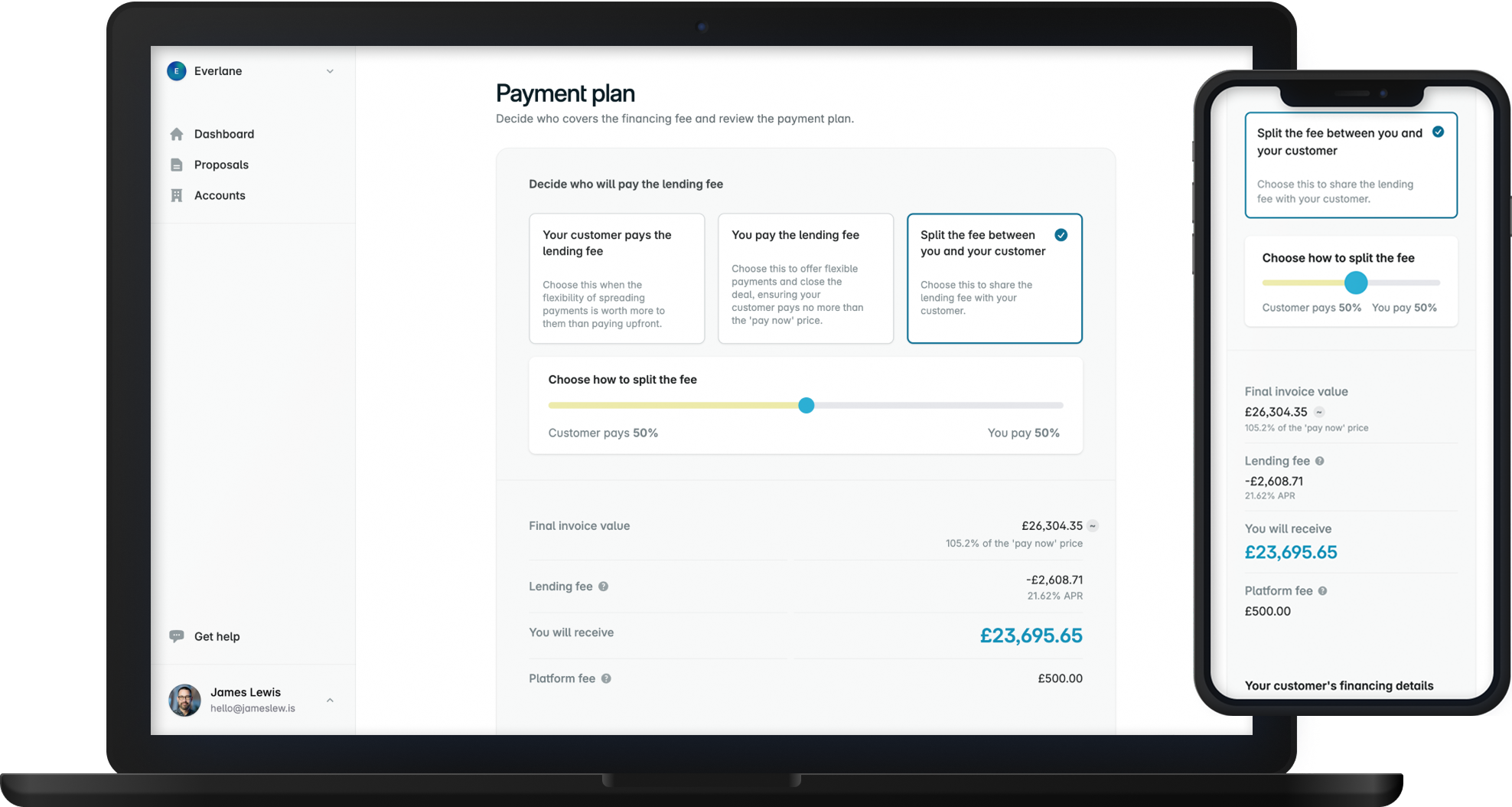
As lender integrations came online, we realised there was stronger pull from sales-led SaaS vendors who didn’t need a checkout widget. They wanted to offer flexible payment terms in their outbound deals.
We built a vendor-facing financing platform where sales reps could create a deal for a customer and have Lemon handle lender matching, eligibility checks, and repayment calculations.
User flow:
- Sales rep signs in and creates a new company.
- Lemon auto-fetches company details and financials via Companies House.
- The app generates an indicative financing offer (or declines if unqualified).
- Reps use a calculator UI I designed to choose whether to absorb or pass on the financing fee.
- Lemon generates a unique application URL for the buyer.
- The buyer completes the application, and it’s sent to the lender via their API.
- The vendor tracks deal progress and buyer updates through Lemon.
We allowed Sales reps to be in control of who paid the lending fee. For instance, if a customer needed monthly payment terms in order to close a deal, the sales team could decide to swallow the lending fee. On the other hand, if customers were asking to pay monthly instead of annually, they would typically be willing to pay the fee in order to get the preferred payment terms.
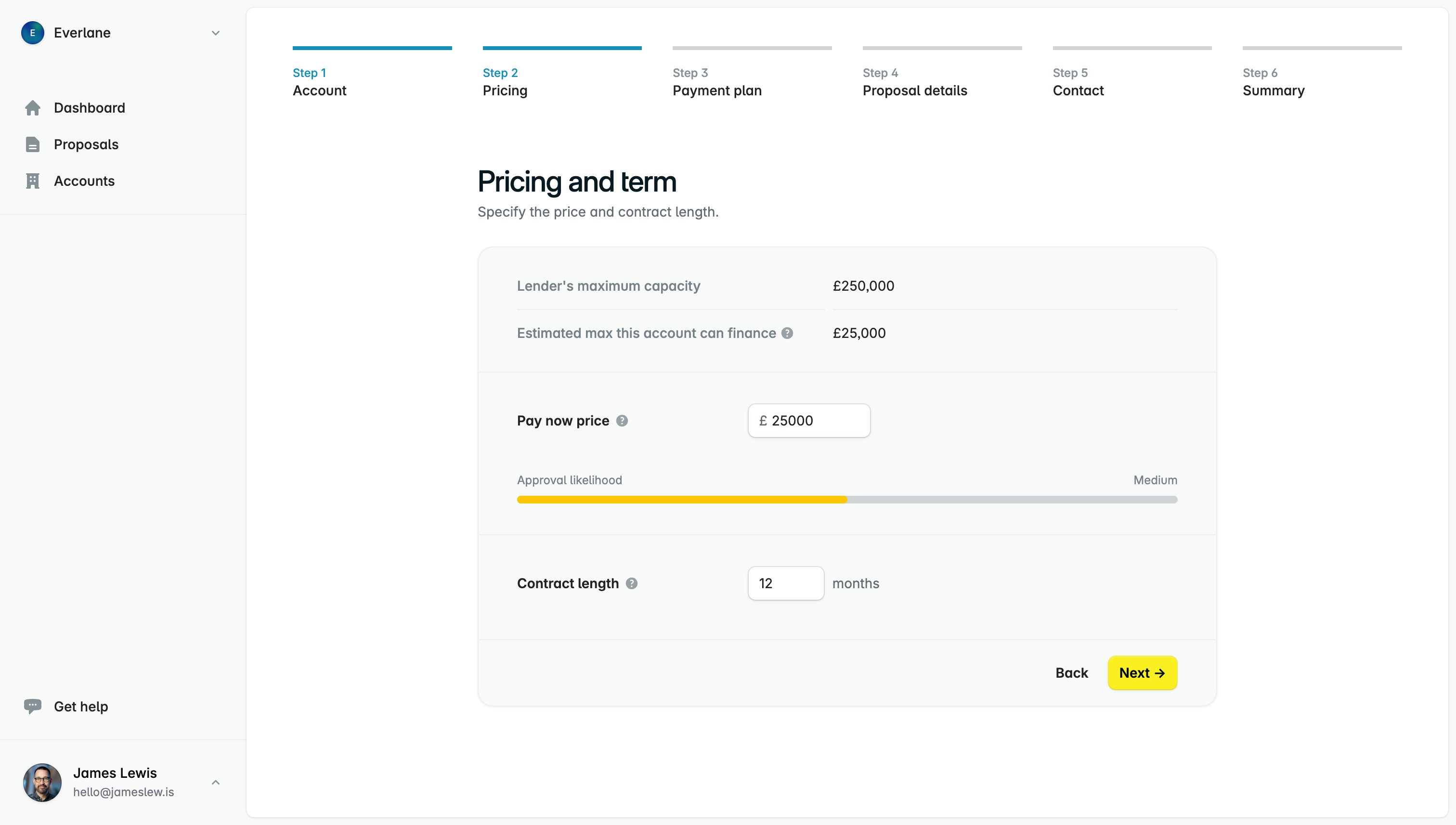
We onboarded a number of UK SaaS vendors as early adopters, but final lending decisions sat entirely with the partner banks, which made deal conversion unpredictable. That dependency exposed a flaw in the model and pushed us to rethink who we were really building for.
What I did:
- Designed and built the frontend in a Next.js monorepo and Tailwind CSS
- Created a shared Tailwind UI component library that accelerated building new features
- Collaborated closely with CTO on lender integrations and business logic
- Designed, wrote copy and built the marketing website
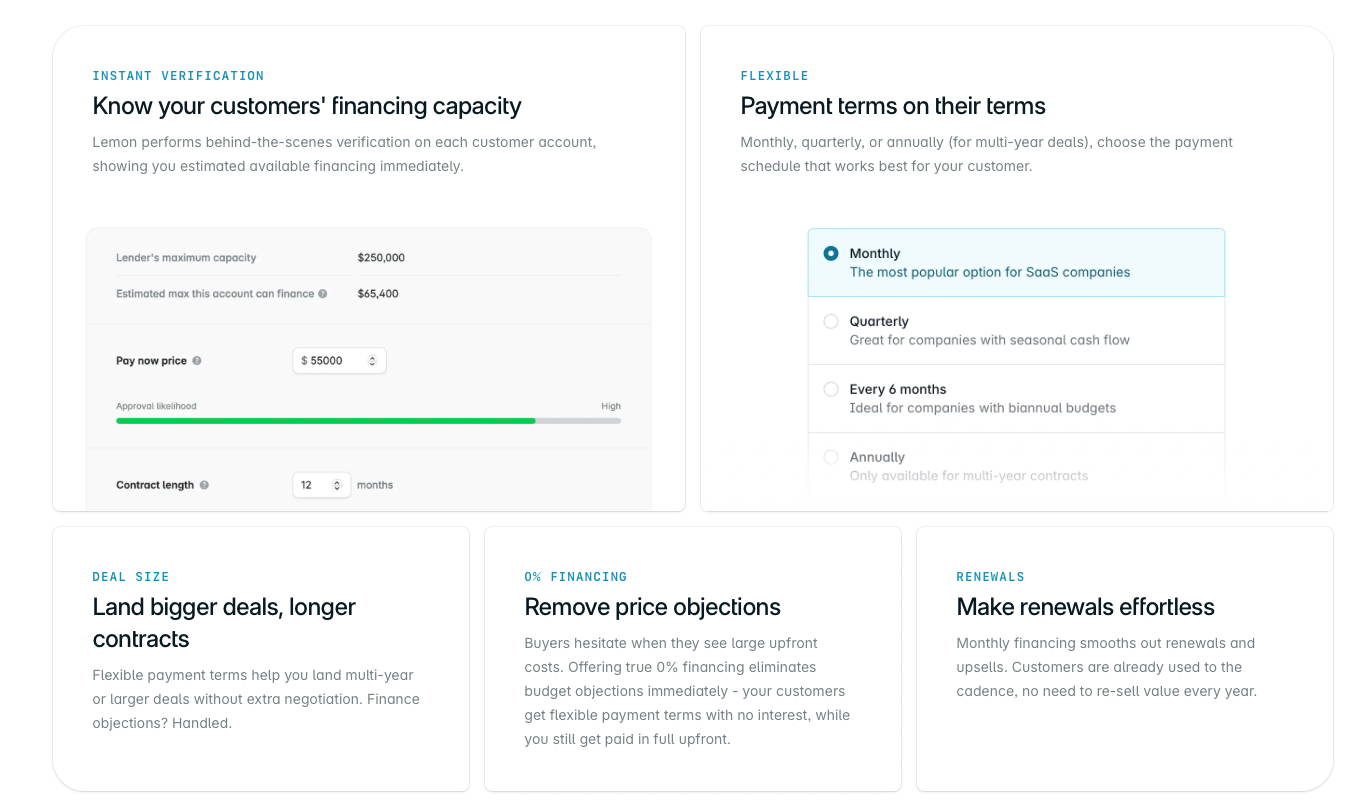
Phase 3: AI-Powered Platform for Finance Brokers
While we were building and iterating the SaaS financing platform, we were still doing a fair amount of manual work (do things that don't scale). We were effectively acting as finance brokers ourselves - collecting data, chasing documents, and liaising with lenders. Doing this unscalable work revealed where the real pain lived: inside the broker workflow.
We pivoted Lemon toward being an AI-first platform for finance brokers that automated repetitive admin and data validation.
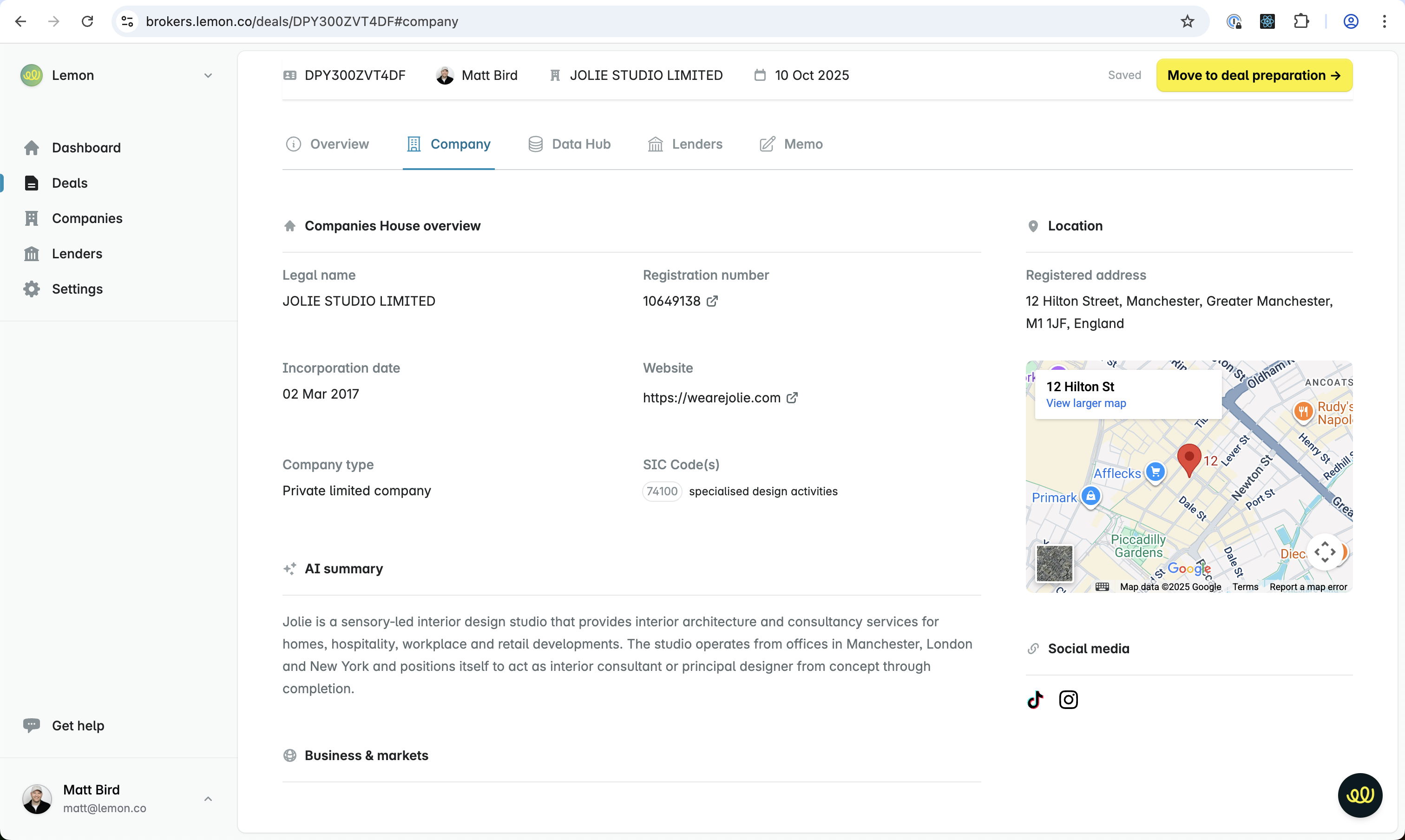
Key features included:
- AI Data Rooms: Brokers could define which documents they needed from clients. Lemon created a client-facing upload portal, and LLMs verified each submission (e.g. detecting if only 12 months of bank statements were provided when 24 were required).
- Companies House integration: Instant business verification and financial overview.
- AI research agent: Summarised information about the client company, based on autonomous web research, saving the broker time and highlighting potential risk signals.
Through customer conversations, we discovered that most brokers in our ICP lived inside HubSpot, so instead of replacing their CRM, we built a HubSpot app that surfaced the same AI insights directly within the company view.
I designed and built both the web app frontend and the HubSpot UI, working closely with our CTO. We reused the component library from the financing app to move fast and maintain design consistency. Although the broker app never reached live users, we had around 50 brokers on a waiting list ready to join.
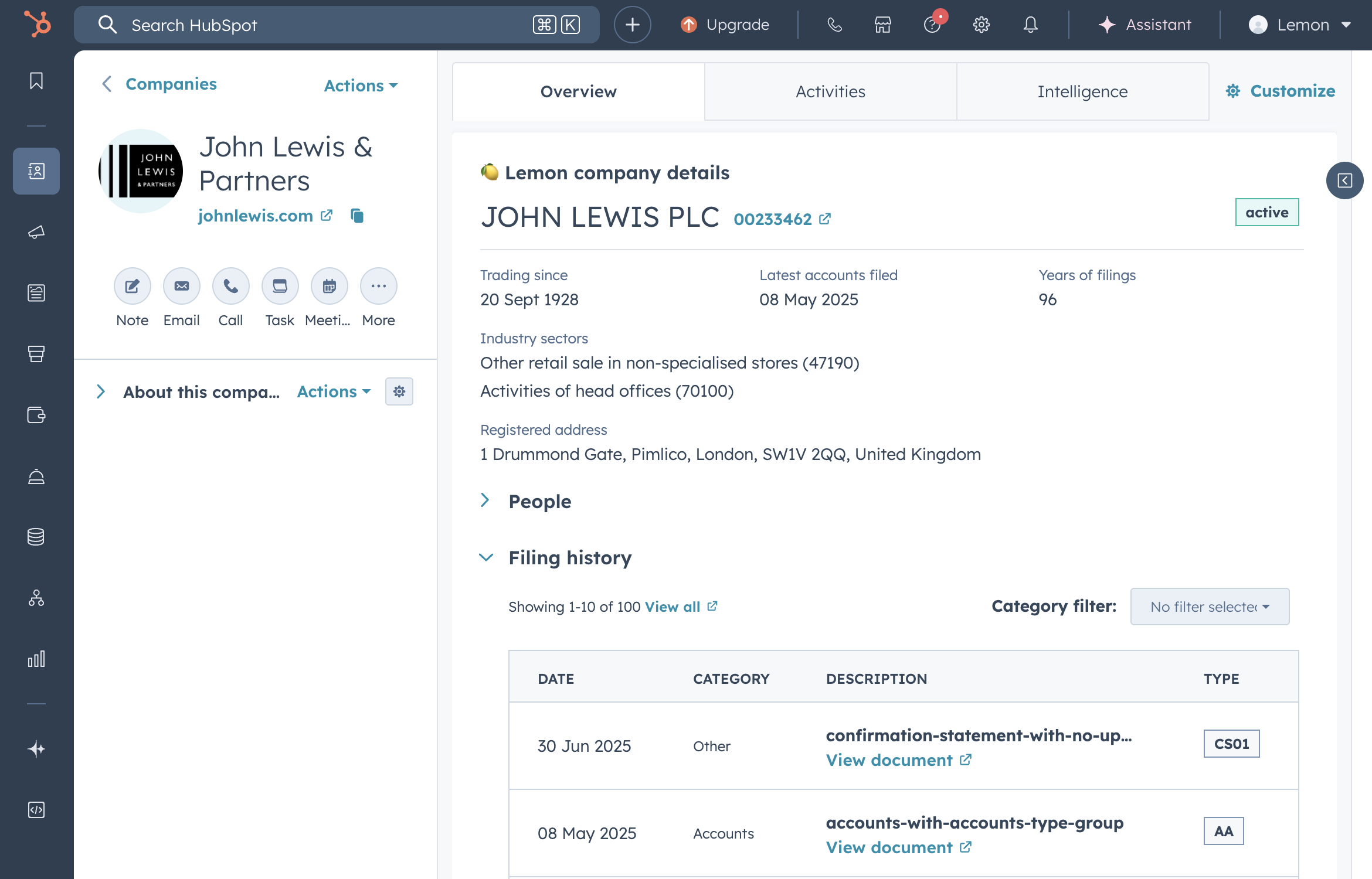
The Hubspot app allowed brokers to view the Lemon-derived data directly in their company page.
What I did:
- Designed and built the broker web app and HubSpot app UI
- Integrated AI models for document checking and company research
- Collaborated deeply with the CTO on backend data flows and APIs